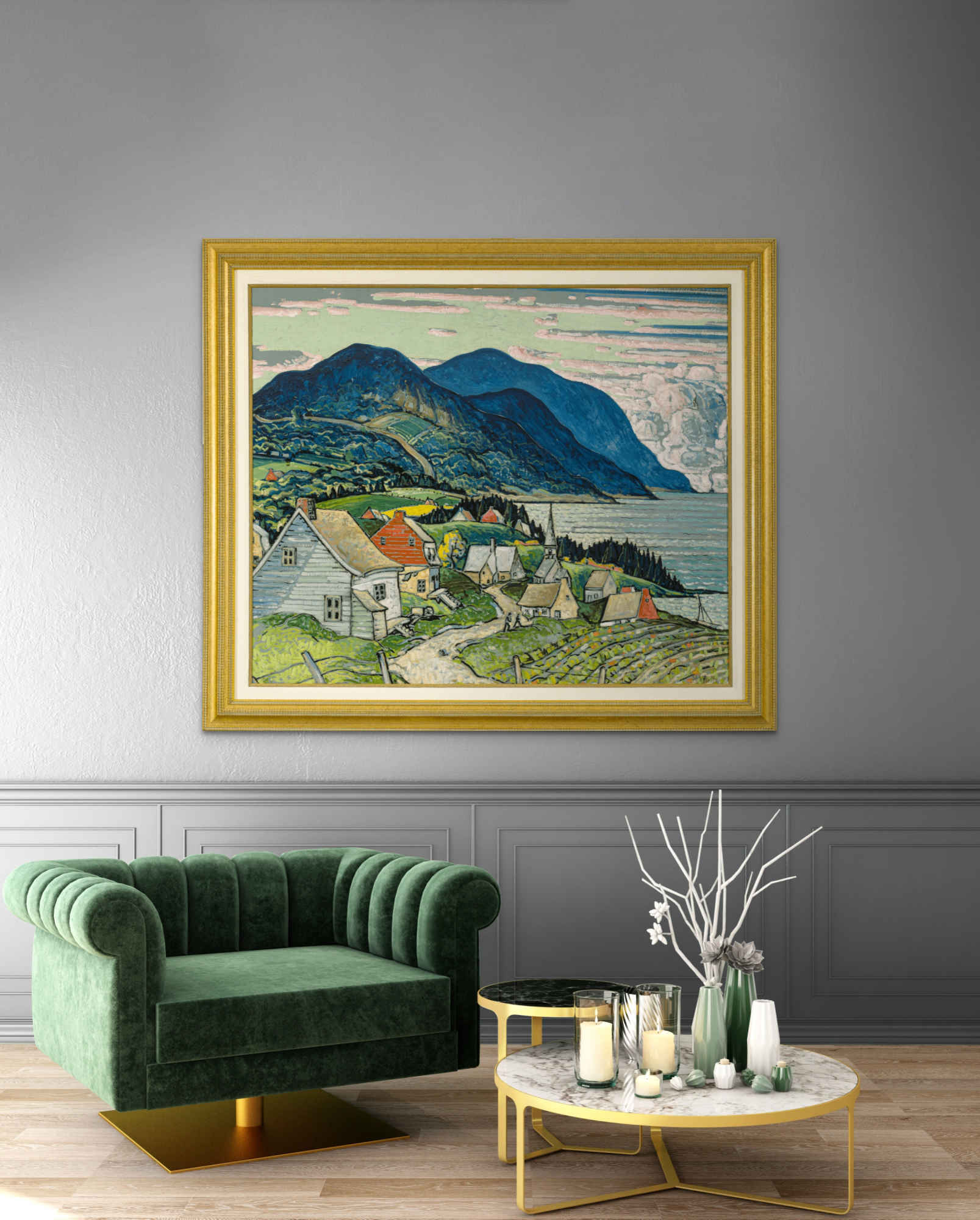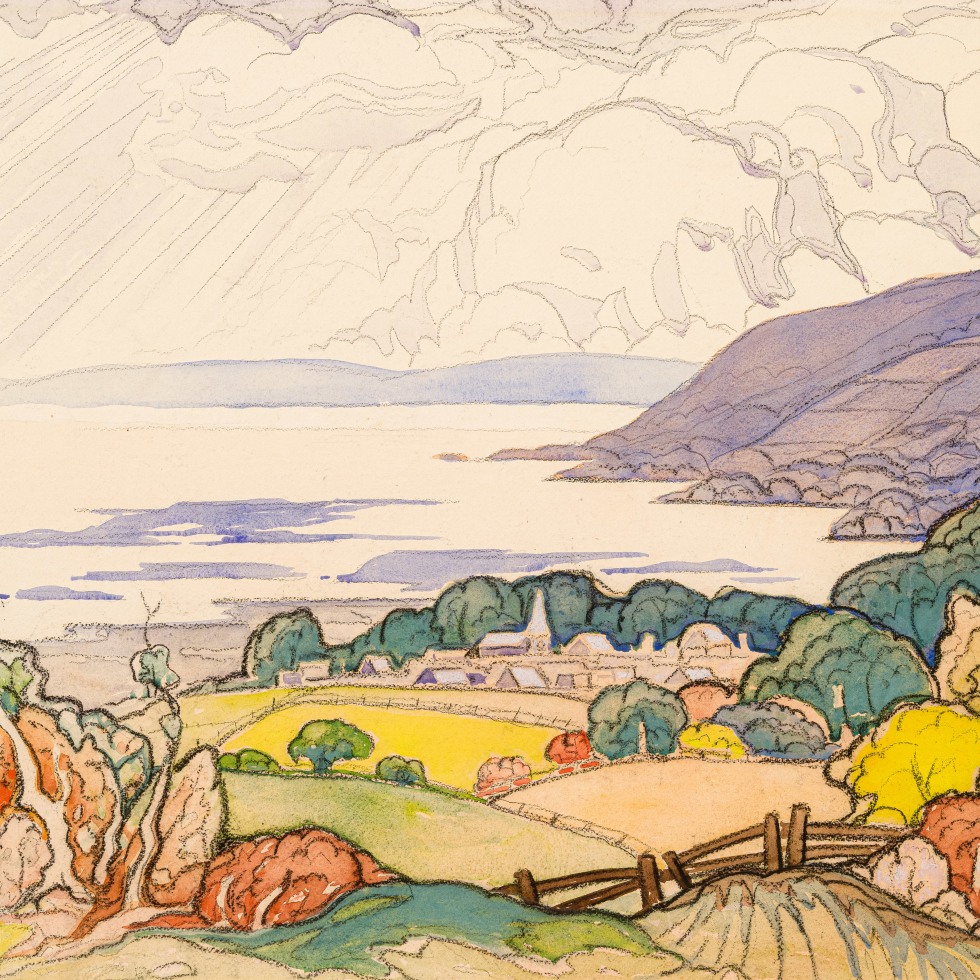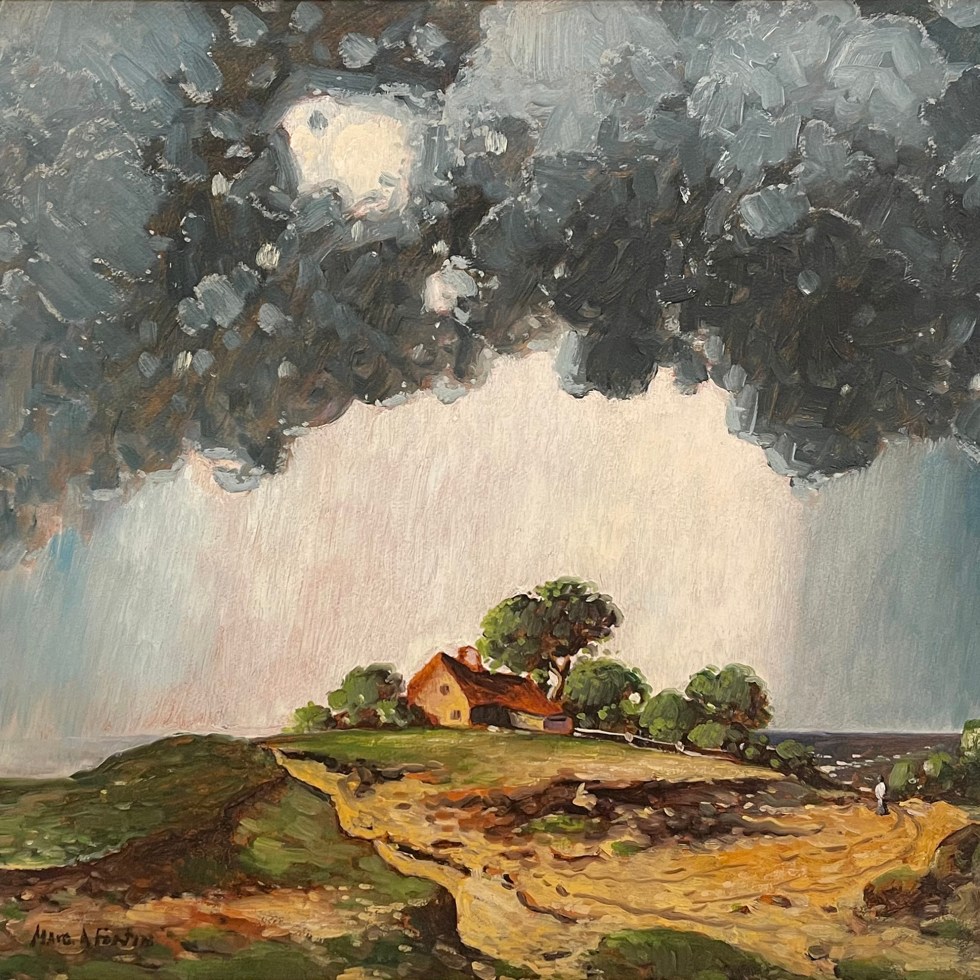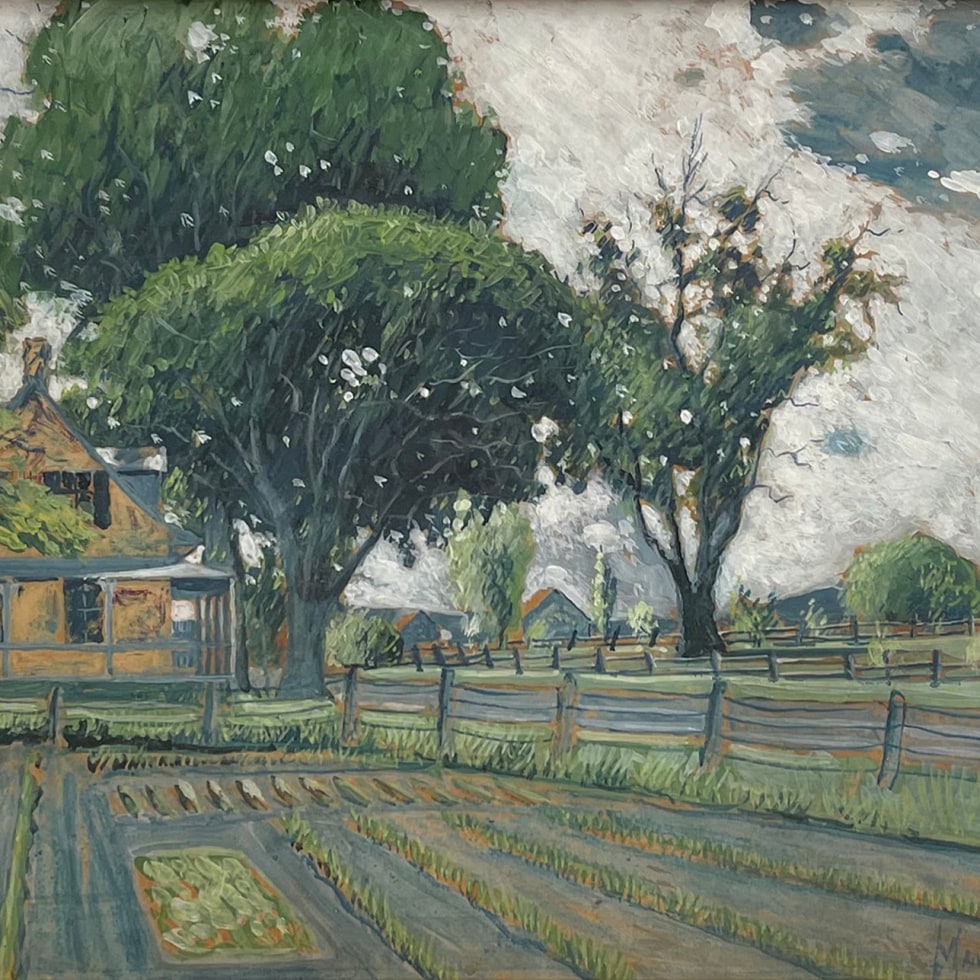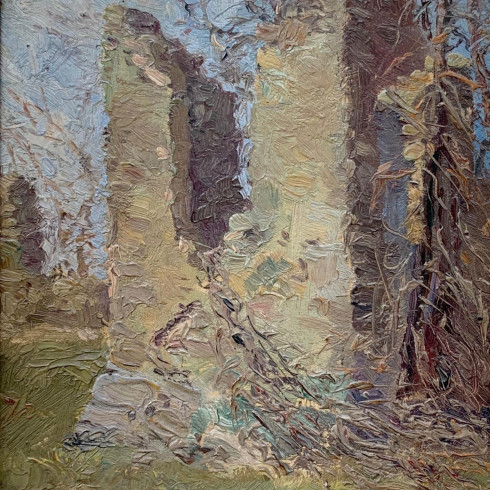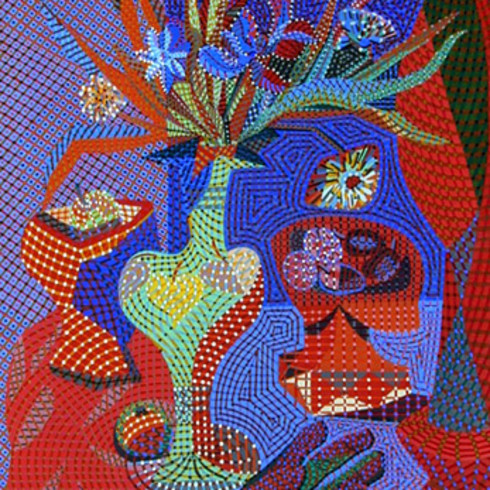Notable Sales
Paysage à Saint-Siméon, 1938
99.1 x 119.4 cm
Inscriptions
signed, ‘MA FORTIN’ (lower right); titled, ‘Paysage à Saint-Siméon’ (verso, centre)Provenance
Private collection, Montreal
Galerie Walter Klinkhoff Inc., Montreal
Montréal Trust Company, Montreal
Property of a Distinguished Montreal Collector, May 1987
Exhibitions
New York, World’s Fair 1939, Canadian Pavilion, Canadian Art, under the auspices of the Royal Canadian Academy of Arts, 1 May- 15 June 1939, exhibited as Landscape at St. Simeon, cat. no. 23; also presented in Ottawa, National Gallery of Canada, 8 July -13 August 1939 and in London, Ontario, Elsie Perrin Williams Memorial Art Gallery and Museum, Contemporary Canadian Paintings, August-November 1940, exhibited as St. Simeon, cat. no. 61.
Montreal, Walter Klinkhoff Gallery, Marc-Aurèle Fortin Retrospective Exhibition, 8-22 September 1979.
Montreal, Musée Marc-Aurèle Fortin, 21 February - 4 April 1987.
Montreal, Galerie Walter Klinkhoff Inc., Homage to Walter Klinkhoff, 12-26 September 1998, cat. no. 7.
Montreal, Galerie Walter Klinkhoff Inc., Marc-Aurèle Fortin (1889-1970): Retrospective Exhibition, 16-30 September 2006, cat. no. 38.
Quebec City, Musée national des beaux-arts du Québec, Marc-Aurèle Fortin. The Experience of Colour, 10 February - 8 May 2011; also presented in Kleinburg, Ontario, at the McMichael Canadian Art Collection, 28 May -11 September 2011, cat. no. 78.
Literature
The National Gallery of Canada, Exhibition of Canadian Art New York World’s Fair (exhibition catalogue) (Ottawa, 1939), 8.
Robert Ayre, “Series of Canadian Exhibitions Each Lasting About Six Weeks to Be Arranged for World's Fair”, The Standard, Montreal, 29 April 1939.
Montreal, Archives of the Marc-Aurèle Fortin Foundation, Entretiens de René Buisson avec l’artiste, Macamic, 3 February 1968.
Esther Trépanier, “ Marc-Aurèle Fortin vu par ses contemporains,” Marc-Aurèle Fortin. Retrospective Exhibition (exhibition catalogue) (Montreal: Galerie Walter Klinkhoff Inc., 2006), front cover [reproduced].
Richard Foisy, François-Marc Gagnon, Michèle Grandbois, Sarah Mainguy, Esther Trépanier, Marc-Aurèle Fortin. The Experience of Colour, edited by Michèle Grandbois (Quebec City / Montreal, Musée national des beaux-arts du Québec : Les Éditions de l’Homme, 2011), 167, 252 [reproduced].
Marc-Aurèle Fortin, Paysage à St-Siméon
by Michèle Grandbois
Marc-Aurèle Fortin was born in 1888 in Sainte-Rose (now Laval), one of the first French-Canadian towns to have settled in the mid-1800s on Île Jésus, about 15 kilometres north of the Island of Montreal. Half a century later, the lush greenery of Sainte-Rose became a popular vacation spot for Montrealers. Fortin grew up surrounded by large elm trees on the main street of Sainte-Rose in a large, wealthy and cultured family. His father, Thomas Fortin (1853–1933), lawyer, member of Wilfrid Laurier’s Liberal government and judge of the Superior Court of Quebec, was firmly opposed to his son's passion for painting. His mother, Amanda Fortier (1861–1953), was a musician who was very protective of him.
Although he was noticed at school for his drawing skills, the young Fortin, lacking financial support, travelled to Alberta for work, before studying a few months at the Art Institute of Chicago (1909–1910). His studies in the birthplace of skyscrapers were enriched by trips to museums, galleries, and libraries. It was on the shores of Lake Michigan that he became captivated by Social realism and Regionalism, two American art movements that celebrated the vast, contrasting country, its history, myths and the daily lives of its people. Had he studied at the Art Institute two years earlier, Fortin would have met Thomas Hart Benton (1889–1975), who is remembered in art history as a key figure in North American Regionalism. From then on, Fortin adopted a vision of national, identity-based painting, rejecting the modern, universal tendencies of École de Paris, which were celebrated at the Armory Show in 1913. In addition to this regionalist influence, Fortin discovered the works of English painter Sir Alfred East in an exhibition organized by the Art Institute. His admiration for the master landscape artist drew him to the great outdoors and the picturesque. From then on, Fortin paid close attention to East’s technique, which consisted of applying colour in superimposed layers of paint, from darkest to lightest.
After his studies in Chicago, which were “out of the ordinary” for a French-Canadian artist, Marc-Aurèle Fortin returned to Montreal, where he became interested in subjects inspired by local landscapes, both rural and urban. In the 1920s, he painted scenes of his hometown surrounded by towering elm trees that charmed Montreal critics, dealers, and collectors. His work also documented Montreal’s expansion into farmland, industrial activity at the port, and the construction of the Jacques Cartier Bridge. When Fortin exhibited his work, it was considered exceptional and modern. His exposure reached its peak during a solo exhibition at the Art Association of Montreal in 1932-1933, which showcased the artist’s diverse range of themes and techniques in painting, watercolour and printmaking.
After the death of his father in 1933 and a brief stay in France, Fortin’s career took a new turn. Upon his return to Montreal in 1934, he perfected his technique of using black and grey backgrounds to amplify the colours on the surface of his artworks. During this time, he also began his annual summer trips to the French-Canadian countryside, far from the city. Equipped with his painting and watercolour gear, he travelled to Charlevoix (1936–1939), Gaspésie (1940–1945) and Saguenay (1945–1949) in search of picturesque views of the Laurentian landscape, where coastal towns abound.
Marc-Aurèle Fortin was very fond of the Charlevoix region, which he described as “an enchanting country of incredible picturesqueness.” [1] He was particularly attached to Saint-Siméon, as shown in this painting on a grey background, which is undoubtedly one of the most eloquent examples of the creative impulse that inspired the painter in the second half of the 1930s. The RCA recognized the value of Paysage à Saint-Siméon by including it in the 1939 New York World’s Fair’s Canadian art exhibition.
Fortin never tired of this striking view, of which he painted several versions in watercolour and oil between 1938 and 1945. [2] These works share the same point of view, except for a few differences: a bird’s-eye view of the town, looking over the coastline of the river estuary, which the painter compressed into three large massifs. In reality, the mountains spread over a distance of about ten kilometres east of the town, from Pointe aux Quilles to Cap de la Tête aux chiens.
Comparing Paysage à Saint-Siméon with other versions, we can see that Fortin placed the narrow, winding road in the foreground of his composition to draw the viewer’s eye into the town before it looks to the majestic capes of the Laurentian countryside. Using a complementary colour palette and bright tones, the artist captured an evanescent moment, unique to this coastal region, when the restless sky creates a soft clearing to cast silver rays across the river, spreading its warm light on the town and farmland. An attentive observer will notice that the town is painted with a sharp hand (the sloping roofs of the houses, the spire of the church, the position of the two stick figures, and the rigging of the sailboat in the lower right-hand corner) to create contrast with the broader, freer contours and shapes of the wilderness. If the viewer’s eye tries to cross the short horizon line on the right to reach the scene’s vanishing point, it is immediately blocked by a wall of cumulonimbus clouds and smoke from a small steamboat. [3]
Marc-Aurèle Fortin mastered the architecture of pictorial spaces by combining different points of view and enhancing his textured, colourful planes with contour lines. In the 1930s, the painter gained notoriety that earned him the support of living art advocates and the conservative circles of the Royal Canadian Academy of Arts. Fortin later became an associate member of the RCA in 1942. Nationalism and modernity are brilliantly combined in Paysage à Saint-Siméon—this painting has become an emblem in the Canadian imagination of both the raw power of the land and the peaceful life of small French-Canadian communities.
Michèle Grandbois
Michèle Grandbois is currently an independent art historian. She holds a doctorate in history from the Université Laval, and she taught art history before moving to the Musée national des beaux-arts du Québec (MNBAQ) in 1987 as curator of the museum’s collection of works on paper and then of its collection of modern art. She retired from the museum in 2014.
In addition to her activities in documentation, public representation, and expansion of the MNBAQ collections, Grandbois coordinated, directed, or co-directed some thirty exhibitions during her time as curator. She is the author of numerous monographs on Canadian artists, including Jean Dallaire, Clarence Gagnon, and Jean Paul Lemieux. Among her thematic writings are L’art québécois de l’estampe, 1945-1990 and (co-written with Anna Hudson and Esther Trépanier) The Nude in Modern Canadian Art, 1920–1950, winners in 1996 and 2011 respectively of the Award of Outstanding Achievement in Research from the Canadian Museums Association. She was general editor of the book Marc-Aurèle Fortin: L’expérience de la couleur (Marc-Aurèle Fortin: The Experience of Colour), which was awarded the Prix Marcel-Couture at the 2011 Salon du livre in Montreal. Her last project as curator of the MNBAQ was the exhibition Morrice and Lyman in the Company of Matisse, presented in Quebec City in the summer of 2014.
Always seeking deeper understanding and animated by her desire to create greater public awareness of art history, Michèle Grandbois now devotes herself to writing projects on Canadian modern art.
______________________
Footnotes:
[1] Excerpt from a letter from Marc-Aurèle Fortin to Jean-Paul Pépin, n.d. [June 1940], from the private archives of Estelle Piquette-Gareau.
[2] According to the latest research by Sarah Mainguy, author of the artist’s catalogue raisonné, nine works painted in oil (3) and watercolour (6), created between 1938 and 1945, have as their subject this view of Saint-Siméon. Two of them are held in public collections: Village au bord du fleuve, Saint-Siméon, ca. 1938, oil on cardboard, Montreal Museum of Fine Arts collection, and Saint-Siméon, 1938, watercolour and charcoal on paper, Musée national des beaux-arts du Québec collection.
[3] In the MMFA version, which was also painted on a grey background in 1938, Fortin exaggerated the vertiginous effect of the winding slope in the foreground and heightened the capes. The later oil painting dated circa 1945 (private collection) emphasized the religious character of the small community by presenting a more compact view of the village, huddled around the stone church with its spire decorated with a cross. See the reproduction of the latter in Marc-Aurèle Fortin: L’expérience de la couleur (Quebec City/Montreal: Musée national des beaux-arts du Québec/Les Éditions de l’Homme, 2011), 182, 256, cat. no. 78 [reproduced].




